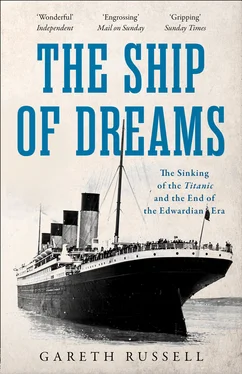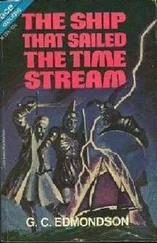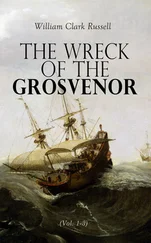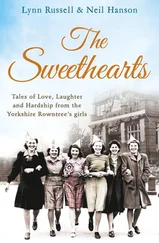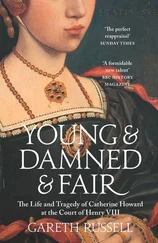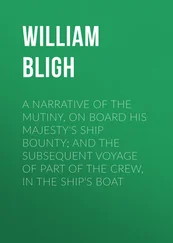Noëlle’s husband Norman threw himself into working with the bloc in the Lords who opposed the impending Parliament Bill, or the ‘Lords Act’ as it was more generally known.[28] At first, cold logic dictated that the House of Lords had one immeasurable advantage in their favour: to pass this Bill neutering them, Prime Minister Asquith needed the victims’ acquiescence. They, fairly obviously, were expected to veto the Parliament Bill with savage alacrity, piously arguing that not to do so would ensure that their legacies ‘would be degraded by our failure to be faithful to our trust’.[29] Asquith and his allies threatened to pull the monarchy into the maelstrom by pressuring the King who was, after all, the hereditary guardian of the elected government; they wanted him to flood the House of Lords with an unprecedented number of newly created peerages, all awarded to prominent Liberal sympathisers. Privately, George V regarded Asquith’s plan as ‘a dirty, low-down trick’, but practically he had no intention of seeing the Crown dragged into the mire of an ugly political quarrel, particularly after one fraught prime ministerial audience at the Palace, during which Asquith reiterated that, if his demands were not met, ‘I should immediately resign and at the next election should make the cry, “The King and the Peers against the people.”’[30] This threat to the monarchy reawakened feelings of chivalric loyalty in a sufficient number of peers, including Noëlle’s husband and her friend’s husband, the Duke of Sutherland, who fell on their swords for their king by agreeing either to abstain or vote for the Bill that would castrate them. A less charitable interpretation of their actions might be that they chose to surrender decorously only once they realised they could not win at anything but the most pyrrhic of costs.
The Lords Act was a critical moment in the decline of the British aristocracy, indeed arguably its most significant single event. Their power had been waning since 1832, thanks to a series of prerogative-clipping Reform Acts, while a sustained period of agricultural recession, beginning in the 1870s, had caused irreparable damage to a caste that still generally drew most of its income from the rural economies. There was also a sense of malaise and victimhood within the aristocracy that accelerated, and perhaps secured, their decline, while the rise of capitalism had left many of them confused and, for the first time, familiar with the uncomfortable sensation of not being the chief beneficiaries of the passing of the ages. Noëlle Rothes had a political mind which, like her husband’s, leaned strongly towards Toryism. She was also a supporter of the suffragettes, a cause she shared with her friend Edith Vane-Tempest-Stewart, Viscountess Castlereagh, whose husband Charles was heir to the marquessate of Londonderry, one of the most prestigious peerages in Ireland. Edith, like Noëlle, was aghast at the Lords Act, not just because it was their class’s legislative equivalent of seppuku, but also for what it meant to the other great crisis of Edwardian Britain – Irish Home Rule, the movement born in the nineteenth century that sought some form of governmental independence for Ireland. Initially, the proposal had called for a Dublin Parliament that had jurisdiction over local matters, within a system that remained tied to Britain through foreign policy, which was to be left to the London Parliament at Westminster, and through the Crown, with the King and his heirs remaining kings and queens of Ireland.

Lady Rothes in the outfit she wore to George V’s coronation.
Countess of Rothes, 1911 ( © The Randy Bryan Bigham Collection)
This seemingly mild proposal was hugely popular in Ireland’s southern three provinces and intensely feared in most of Ulster, Ireland’s northern segment. The Irish branch of the aristocracy, often referred to as the Ascendancy, were similarly alarmed, seeing in the Home Rule movement the first whisper of their requiem; as a result, the House of Lords had twice vetoed Home Rule Bills. Now, with that power of destruction softened simply to one of delay, Asquith had promised his Irish nationalist allies a Third Home Rule Bill which this time would almost certainly pass. Plans to prevent Home Rule being granted to any part of Ireland now looked hopeless, resulting in Ulster unionists adjusting their focus to populist agitation in the north of Ireland and, if necessary, arming their supporters as part of the new ‘Save Ulster’ campaign, the de facto headquarters of which were to be the north’s industrial centre, the city of Belfast.
The Parliament Bill was reintroduced to the House of Commons on 21 February 1911 and it had passed all its necessary stages there by 15 May. A brief lull in proceedings ensued, generated by cross-party deference for the kaleidoscope of patriotic festivities surrounding the opening of the Festival of Empire in London and George V’s coronation at Westminster Abbey five weeks later, alongside his Anglo-German wife, Mary of Teck, the first British queen consort to be born in the country since Katherine Parr, four centuries earlier.[31] As the morning of the coronation dawned, with his typical pragmatism the King noted in his diary that it was ‘Overcast and cloudy, with some showers and a strongish cool breeze, but better for the people than great heat’.[32] By the time Noëlle and her husband boarded the train to return north to Leslie House for the start of the grouse-shooting season on 12 August, the King had signed the Bill, the Home Rule crisis was one step closer and the British aristocracy’s greatest remaining form of tangible political clout was dead.
*
Between the Festival of Empire and the coronation, Belfast, the nexus of the coming crisis, celebrated the launch of a ship. Two minutes before she slid into the Lagan river for the first time, the Titanic claimed her sixth victim.[33] As workers wove in and out beneath the 26,000-ton hull, knocking away the massive timber supports which had cradled the Titanic ’s belly during her construction, one collapsed on to James Dobbin, shattering his pelvis. The forty-three-year-old shipwright had worked at the Harland and Wolff shipyards for nearly two decades; he was carried to the company car, which rushed him to the Royal Victoria Hospital, recently completed thanks to the fund-raising of Harland and Wolff’s owner William, Lord Pirrie.[34] Pirrie himself, unaware that one of his employees was fatally haemorrhaging, remained in the specially erected stands with the 100,000-strong crowd, an extraordinary turn-out considering it was nearly one-third the size of the total population of Belfast; they had gathered to watch the launching ceremony of what would, within a year, become the largest moving object in human history.[35] Flags spelling out the word ‘SUCCESS’ fluttered from the grandstand.[36] Proceeds from ticket sales for the launch would be gifted to the hospital where James Dobbin was now fighting for his life.[37] Within twenty-four hours, Dobbin was another subject for the grim joke that did the rounds at Harland and Wolff when a colleague perished on the job: ‘He’s gone to another yard.’[38]
Joining Pirrie at the launch were his wife Margaret; his nephew Thomas Andrews, the yard’s Managing Director and a man largely responsible for designing the ship; the slender Joseph Bruce Ismay, Managing Director of the White Star Line, the new vessel’s operators; Ismay’s New York-born wife Florence, who had never quite accustomed herself to giving up a life spent shuttling pleasurably between homes on Madison Avenue and Tuxedo Park for residency in the Ismays’ faux-baronial pile outside Liverpool, and the Titanic ’s de facto owner, the imposing American financier J. Pierpont Morgan, in declining health and painfully conscious of the inflammation of his nose caused by rhinophyma.[39] Morgan’s cabal of shipping companies, the International Mercantile Marine, had bought the White Star Line as the jewel in its crown in 1903, after several years of bumper revenue for the transatlantic passenger trade.[40] Eight years on, Morgan’s capital had created the Titanic , the second in a three-ship design that would give IMM the largest and most luxurious vessels in the world, operating a weekly run between Britain and America. Her elder sister, the Olympic , would be handed over from builders to owners that same afternoon, in preparation for her maiden voyage from Southampton to New York two weeks later.[41]
Читать дальше
